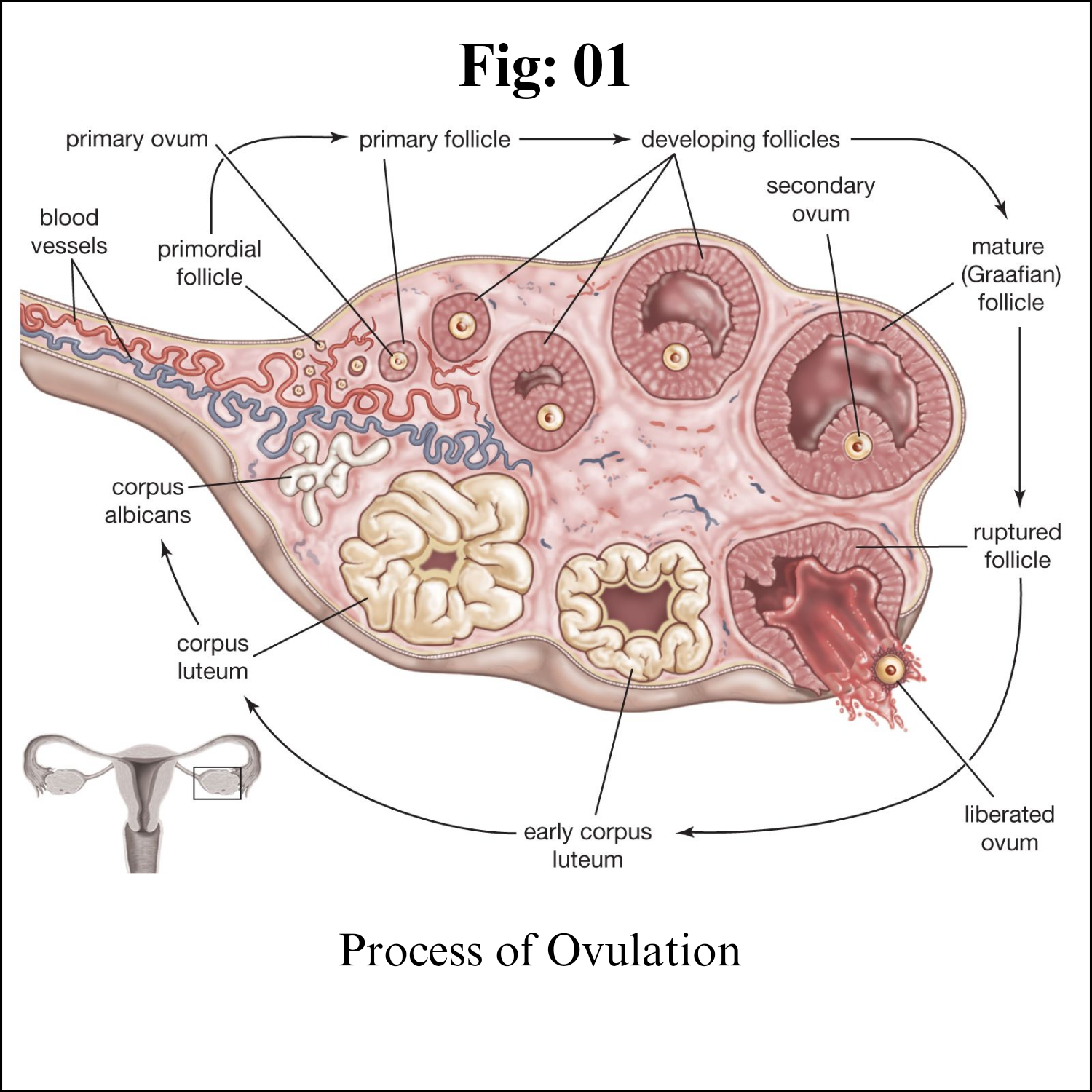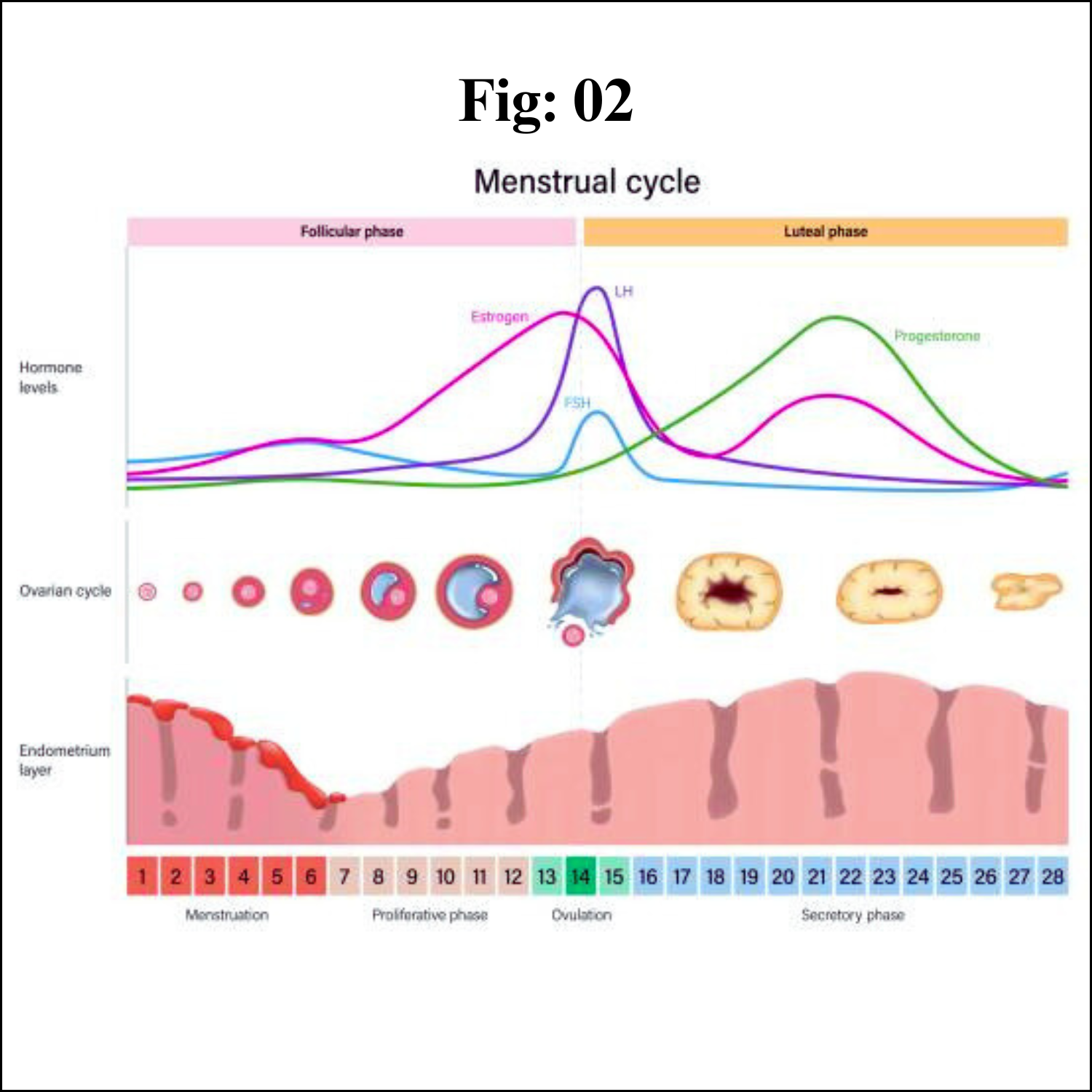Introduction:
The menstrual cycle is a natural process. It is a complex cycle controlled by female hormones that cause regular bleeding (periods). The menstrual cycle has four phases: menstruation, the follicular phase, ovulation and the luteal phase.
The menstrual cycle prepares your body for pregnancy. If you are not pregnant, your hormones send a signal to your uterus to shed its lining. This becomes your period. Once you start your period, the cycle starts again.
A menstrual cycle is measured from the first day of your period to the first day of your next period. The average length of a menstrual cycle is 28 to 29 days, but every woman’s cycle is different. For example, teenagers might have cycles that last 45 days, whereas women in their 20s to 30s might have cycles that last 21 to 38 days.
Your first period is called menarche. In Western countries, the average age for a first period is 12 to 13, but it can start as early as nine and as late as 16.
Your last period is called menopause. In Australia, the average age for women to reach menopause is 51 to 52. Some women might reach menopause as late as 60.
Phases of Menstrual cycle:
There are four main phases of the menstrual cycle.
1.Menstruation:
Menstruation is commonly known as a period. When you menstruate, your uterus lining sheds and flows out of your vagina. Your period contains blood, mucus and some cells from the lining of your uterus. The average length of a period is three to seven days.
Sanitary pads, tampons, period underwear or menstrual cups can be used to absorb your period. Pads and tampons need to be changed regularly (preferably every three to four hours) and menstrual cups should be changed every eight to 12 hours.
2.The follicular phase:
The follicular phase starts on the first day of your period and lasts for 13 to 14 days, ending in ovulation. The pituitary gland in the brain releases a hormone to stimulate the production of follicles on the surface of an ovary. Usually, only one follicle will mature into an egg. This can happen from day 10 of your cycle. During this phase, your uterus lining also thickens in preparation for pregnancy.
3. Ovulation:
Ovulation is when a mature egg is released from an ovary and moves along a fallopian tube towards your uterus. This usually happens once each month, about two weeks before your next period. Ovulation can last from 16 to 32 hours.
It is possible to get pregnant in the five days before ovulation and on the day of ovulation, but it’s more likely in the three days leading up to and including ovulation. Once the egg is released, it will survive up to 24 hours. If sperm reaches the egg during this time, you may get pregnant.
4. The luteal phase:
After ovulation, cells in the ovary (the corpus luteum), release progesterone and a small amount of oestrogen. This causes the lining of the uterus to thicken in preparation for pregnancy.
If a fertilised egg implants in the lining of the uterus, the corpus luteum continues to produce progesterone, which maintains the thickened lining of the uterus.
If pregnancy does not occur, the corpus luteum dies, progesterone levels drop, the uterus lining sheds and the period begins again.
Common menstrual problems:
Some of the more common menstrual problems include:
Premenstrual syndrome (PMS) – hormonal events before a period can trigger a range of side effects in women at risk, including fluid retention, headaches, fatigue and irritability. Treatment options include exercise and dietary changes.
Dysmenorrhoea – or painful periods. It is thought that the uterus is prompted by certain hormones to squeeze harder than necessary to dislodge its lining. Treatment options include pain-relieving medication and the oral contraceptive pill.
Heavy menstrual bleeding (previously known as menorrhagia) – if left untreated, this can cause anaemia. Treatment options include oral contraceptives and a hormonal intrauterine device (IUD) to regulate the flow.
Amenorrhoea – or absence of menstrual periods. This is considered abnormal, except during pre-puberty, pregnancy, lactation and postmenopause. Possible causes include low or high body weight and excessive exercise.
Summary:
The menstrual cycle is complex and controlled by many different glands and the hormones that these glands produce.
The four phases of the menstrual cycle are menstruation, the follicular phase, ovulation and the luteal phase.
Common menstrual problems include heavy or painful periods and premenstrual syndrome (PMS).
Knowing when in the menstrual cycle a woman is most likely to conceive can increase the chance of pregnancy.
Myths related to Menstrual cycle in India:
The following are some of the Myths followed in India related to Menstrual cycle,
In India even mere mention of the topic has been a taboo in the past and even to this date the cultural and social influences appear to be a hurdle for advancement of knowledge on the subject.
Culturally in many parts of India, menstruation is still considered to be dirty and impure. The origin of this myth dates back to the Vedic times and is often linked to Indra's slaying of Vritras.
For, it has been declared in the Veda that guilt, of killing a brahmana-murder, appears every month as menstrual flow as women had taken upon themselves a part of Indra's guilt.
Further, in the Hindu faith, women are prohibited from participating in normal life while menstruating. She must be “purified” before she is allowed to return to her family and day to day chores of her life.
However, scientifically it is known that the actual cause of menstruation is ovulation followed by missed chance of pregnancy that results in bleeding from the endometrial vessels and is followed by preparation of the next cycle.
Therefore, there seems no reason for this notion to persist that menstruating women are “impure.”
Many girls and women are subject to restrictions in their daily lives simply because they are menstruating. Not entering the “puja” room is the major restriction among urban girls whereas, not entering the kitchen is the main restriction among the rural girls during menstruation.
Menstruating girls and women are also restricted from offering prayers and touching holy books.
The underlying basis for this myth is also the cultural beliefs of impurity associated with menstruation. It is further believed that menstruating women are unhygienic and unclean and hence the food they prepare or handle can get contaminated.
According to a study by Kumar and Srivastava in 2011, participating women also reported that during menstruation the body emits some specific smell or ray, which turns preserved food bad.
And, therefore, they are not allowed to touch sour foods like pickles. However, as long as general hygiene measures are taken into account, no scientific test has shown menstruation as the reason for spoilage of any food in making.
Cultural norms and religious taboos on menstruation are often compounded by traditional associations with evil spirits, shame and embarrassment surrounding sexual reproduction.
In some cultures, women bury their cloths used during menstruation to prevent them being used by evil spirits.
In Surinam, menstrual blood is believed to be dangerous, and a malevolent person can do harm to a menstruating woman or girl by using black magic (“wisi”). It is also believed that a woman can use her menstrual blood to impose her will on a man.
Interestingly, in Asia including India, such beliefs are still practiced. However, there seems to be no logical or scientific explanation for this.
In some parts of India, some strict dietary restrictions are also followed during menstruation such as sour food like curd, tamarind, and pickles are usually avoided by menstruating girls.
It is believed that such foods will disturb or stop the menstrual flow. As far as the exercise is concerned, many studies in India and elsewhere have revealed that many adolescent girls believe that doing exercise/physical activity during menses aggravate the dysmenorrhea while in real exercise can help relieve the menstruating women with symptoms of premenstrual syndrome and dysmenorrhea and relieve bloating. Exercise also causes a release of serotonin, making one feel much happier.
In some parts of India, perceptions of Hinduism center on notions of purity and pollution. Bodily excretions are believed to be polluting, as are the bodies when producing them.
All women, regardless of their social caste, incur pollution through the bodily processes of menstruation and childbirth. Water is considered to be the most common medium of purification.
The protection of water sources from such pollution, which is the physical manifestation of Hindu deities, is, therefore, a key concern.
This highlights the possible reason why menstruating women are not allowed to take a bath especially for first few days of their menstrual period. It is believed that if a girl or women touches a cow while she is on her period, that the cow will become infertile – leading girls to associate their own bodies with curse and impurity.
Impact of Myths Related to Menstruation on Women's Life:
Such taboos about menstruation present in many societies impact on girls’ and women's emotional state, mentality and lifestyle and most importantly, health. Large numbers of girls in many less economically developed countries drop out of school when they begin menstruating. This includes over 23% of girls in India.
In addition to this, the monthly menstruation period also creates obstacles for female teachers. Thus, the gender – unfriendly school culture and infrastructure and the lack of adequate menstrual protection alternatives and/or clean, safe and private sanitation facilities for female teachers and girls undermine the right of privacy.
There are health and hygiene issues also to consider relating to girls and menstruation. Over 77% of menstruating girls and women in India use an old cloth, which is often reused. Further, 88% of women in India sometimes resort to using ashes, newspapers, dried leaves and husk sand to aid absorption.
Poor protection and inadequate washing facilities may increases susceptibility to infection, with the odor of menstrual blood putting girls at risk of being stigmatized.
The latter may have significant implications for their mental health. The challenge, of addressing the socio-cultural taboos and beliefs in menstruation, is further compounded by the fact the girls’ knowledge levels and understandings of puberty, menstruation, and reproductive health are very low.
Combat Menstruation Related Myths:
Empowerment of women through education and increasing their role in decision-making can also aid in this regard. Women and girls are often excluded from decision-making due to their lower literacy levels per se. Increasing the education status of women plays an important role in improving the health status of the community at large and overcoming the cultural taboos, in particular. Provision of sanitary napkins and adequate facilities for sanitation and washing should be made available with the gender perspective. In Delhi, there are an estimated 132 public toilets for women, only 8% the number of the 1534 for men.







